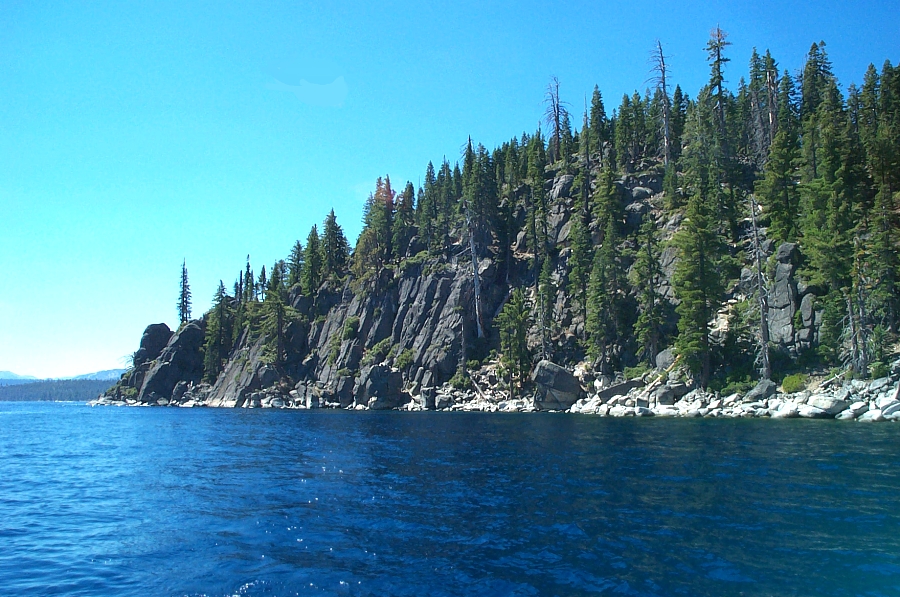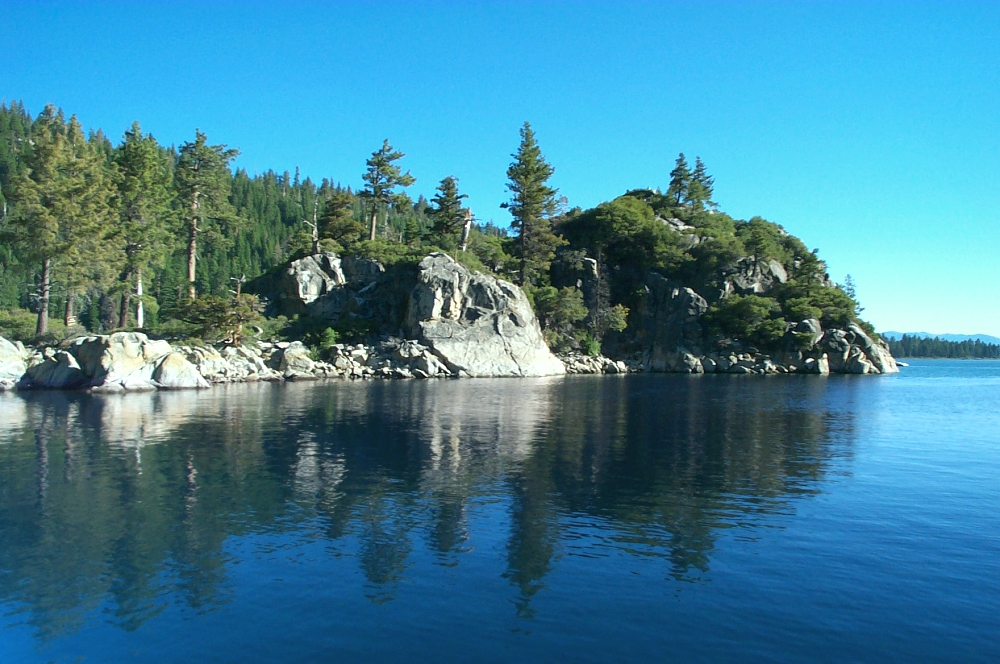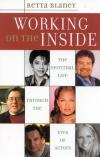WHO HAVE THE POWER: A LEGEND OF THE WESTa novel by Mary Sheeran "Poetic and inspiring...the story calls for your complete attention. Excellent characterization...Elisabeth is a compelling character. Sheeran weaves into the story the beauty of Lake Tahoe, the suffering of the Washo, the stories of the mines, Elisabeth's music, and the contemporary stories instilling into the book a spiritual quality that echoes the spirituality of the American Indian." - Writer's Digest 15th Annual Book Awards “Fast-paced historical fiction about the battles that built the West… Sheeran offers a thorough and thoughtful exploration of the two main stakeholders in the emerging West: the tribes who wish to preserve their land and self-sufficiency and the white settlers…[an] engaging tale of personal growth and cultural conflict [and of] feminism and race relations on the American frontier.” – Kirkus Reviews
"I happened to reread "Who Have the Power" recently and was struck by a theme I had not noticed before - that the systemic degradation of people or of natural resources for economic gain only comes back to hurt us in the end. The story holds out hope, if fragile, depending on stories and songs in the wind, and the eventual recovery of history for our own sakes." - J. Opdyke
"Check out "Who Have the Power...It's a really involving book...I loved the interweaving themes of feminism, mysticism, and the soul of an artist...I kept thinking what a great movie it would make!" - Retta Blaney, Life Upon the Sacred Stage
"A soaring, beautifully written saga that can sweep from Indian battles and mining booms to the subtle shades of the human heart...Elisabeth Barclay is not the only one who is transformed; the reader is as well." - Nevada Record Appeal
“Fast-paced historical fiction about the battles that built the West… Sheeran offers a thorough and thoughtful exploration of the two main stakeholders in the emerging West: the tribes who wish to preserve their land and self-sufficiency and the white settlers…[an] engaging tale of personal growth and cultural conflict [and of] feminism and race relations on the American frontier.” – Kirkus Reviews
"I happened to reread "Who Have the Power" recently and was struck by a theme I had not noticed before - that the systemic degradation of people or of natural resources for economic gain only comes back to hurt us in the end. The story holds out hope, if fragile, depending on stories and songs in the wind, and the eventual recovery of history for our own sakes." - J. Opdyke
"Check out "Who Have the Power...It's a really involving book...I loved the interweaving themes of feminism, mysticism, and the soul of an artist...I kept thinking what a great movie it would make!" - Retta Blaney, Life Upon the Sacred Stage
"A soaring, beautifully written saga that can sweep from Indian battles and mining booms to the subtle shades of the human heart...Elisabeth Barclay is not the only one who is transformed; the reader is as well." - Nevada Record Appeal
 "Elisabeth and ... Masete travel the timelines...and inhabit Lake Tahoe, peopling a universal and unending story that others may discover...This book is fast-paced and captivating and the characters are extraordinary. It is a valuable work for understanding Native Americans, women, and other "minorities" and the important place that each group and each person has in the larger scheme of nature. The story's focus on music and spirituality highlights them as necessary elements for ourselves and our planet." - Patty Inglish, HuBPages
"Not generally an enthusiastic reader of historical fiction, I found myself admiring as I read how carefully but gracefully you incorporated the scholarship on Virginia City's early years, and its prominent characters. I particularly loved your depiction of William Ralston [Lawrence Richards] as a forward-looking hero rather than a grasping villain, and of John Mackay as an opportunist...I also admire the way you dealt not only with the historical past, but also with the ways that past has been represented in popular culture. And in the midst of all of this, you also managed to keep your narrative moving forward briskly, which is no mean feat. I was happy to read 'Who Have the Power.'" - C. Elizabeth Raymond, Professor of History, University of Nevada at Reno, to author
"Elisabeth and ... Masete travel the timelines...and inhabit Lake Tahoe, peopling a universal and unending story that others may discover...This book is fast-paced and captivating and the characters are extraordinary. It is a valuable work for understanding Native Americans, women, and other "minorities" and the important place that each group and each person has in the larger scheme of nature. The story's focus on music and spirituality highlights them as necessary elements for ourselves and our planet." - Patty Inglish, HuBPages
"Not generally an enthusiastic reader of historical fiction, I found myself admiring as I read how carefully but gracefully you incorporated the scholarship on Virginia City's early years, and its prominent characters. I particularly loved your depiction of William Ralston [Lawrence Richards] as a forward-looking hero rather than a grasping villain, and of John Mackay as an opportunist...I also admire the way you dealt not only with the historical past, but also with the ways that past has been represented in popular culture. And in the midst of all of this, you also managed to keep your narrative moving forward briskly, which is no mean feat. I was happy to read 'Who Have the Power.'" - C. Elizabeth Raymond, Professor of History, University of Nevada at Reno, to author
|
|
The Story: When Who Have the Power begins, several women begin to remember the same story in various ways, and they all feel an inexplicable yet profound loss. Some women find support and companionship in a house in Virginia City, Nevada, where they are protected and guided by the mysterious Elmira Grover. Here they recover the lost story they always knew, which centers on a woman of the past, Elisabeth Barclay. A young pianist and suffragist in 1866, Elisabeth discovers that she is half Washo Indian, the daughter of a powerful healer of the tribe whose sacred body of water is Da ow a ga, or Lake Tahoe. A powerful, centuries-old prophecy surrounds her, and her mother's clan looks to her with hope. But Elisabeth rejects her heritage and, to the despair of the warrior Masete to whom she had once been promised, she falls in love with a cavalry officer, the notorious Indian fighter Evan Ames, who shares with her a perverse relationship that seeks healing in the pain they cause others. Elisabeth struggles with the conflict between her scorn for her mother’s people and her sense of justice, her increasingly powerful visions, and her growing attraction to Masete, all of which come to a head in a battle during which Elisabeth realizes she must claim her role in an ancient prophecy that transcends both time and culture. Hailed as "fascinating," "poetic," and magical", and written with a serious perspective mingled with a sharp-tongued whimsy, the novel Who Have the Power eloquently addresses serious issues of clashing cultures, including racial and sexual prejudice, the blindness of a dominant culture, and violence against the land. But even as the novel laments lost history, it also celebrates the persistent power of the imagination that keeps it alive. "She has always been real in spite of the fiction we created that said she never lived." EXPLORE THE WORLD OF WHO HAVE THE POWER The novel's third chapter takes place in the present and describes one way lost history, in this case that of a 19th century pianist and composer, is suspected and then discovered. One woman's historical research combined with an instinct that becomes almost mystical leads her to discover the truth in a mysterious household, where a secret has been waiting to be born for generations. And others, also searching, are led to that same household. Read Chapter 3 of "Who Have the Power"The Washo tribe is a small group that occupied western Nevada and part of California, including Lake Tahoe. Upon the discovery of the Comstock Lode in 1859, this area was cleared for cities and ranches, the trees mined for building and to support the mines, and the lakeside was bought up, driving the Washo away from these shores that had been their sacred water. Beautiful pictures of Lake Tahoe The Wel a ga lei ti clan is fictitious, and the prophecy that surrounds Elisabeth is the author's own invention (so far as she knows!), but much of the background in the novel has been drawn from what little has been published about the Washo people. The Washo did indeed survive when even the federal government assumed they would not (which is why they did not, like the nearby Paiutes, get their own reservation). As much as possible, Ms. Sheeran used Washo words for character names - smoothing over the clicks and glottal stops that are part of the spoken tongue for readability. Read more about the Washo people here. The Washo People The following essays demonstrate the terrible ramifications of following one, and only one, cultural perspective, in this case, an interpretation of scripture that, although was never "official", caused a devastating backlash of violence against native peoples. Smoothing the Pillow: The Christianizing of California The following essay,in some contrast to the previous one,discusses the rich heritage of the 19th century Christian settlers of California (and Nevada). And yet. We Are Central: The Christians of Old California The next 2 entries are from a fascinating compilation by Andrea Franzius, Ph.D., a professor of history at Duke University. These are sections of a site entitled, "California Gold: The Diary and Letters of James M. Burr, 1850-1853. Dr. Franzius gave his permission to introduce you to his site with these two entries, but feel free to enjoy looking at the entire collection. These documents refer to the California Gold Rush, but they are as relevant for the Comstock Lode miners a few years later. (Note: When you click on these pages, the URL on your screen will be for this page; you will need to click on that to return to this page.) California Gold-"Californian Nativism and Racism" by Andrea Franzius Democracy, Law, and Property Violinist Maud Powell, born in 1867, was a pioneer in music and a worker for women's suffrage. This timeline is a wonderful marriage of women's suffrage and music and gives you some idea of Elisabeth's wider world. Elisabeth was distracted from her suffrage work - and her ideas were challenged - but she does return to these ideals. (Note: This is a separate page and you must return to whohavethepower.com manually.) "Women in Music and Their Struggle for Equal Rights" by Karen A. Shaffer The next few sites are rich and can keep you traveling for a long time. They go way beyond the scope of the novel and can complement the history the novel does discuss. The site for feminist theology is added because of the struggle Elisabeth experiences reconciling with her newly discovered past. Her instinct that takes her "beyond the God of the Bible" leads her to her own feminist theology. The site does not deal so much with native American spirituality - hard to separate from their daily life - but one excellent source to begin searching that path would be the works of Paula Gunn Allen. (Note: Again, for these sites, you can return to this page by clicking at the URL on top of the page, which should be the one for this page.) Women in the West Nevada History Timeline The site below was constructed by a Catholic feminist and contains a rich range of feminism's sweep through the centuries. Of interest, please note: "Letters on the Equality of the Sexes: Addressed to Mary S. Parker, President of the Boston Female Anti-Slavery Society from Sarah Grimke, 1837", the "Narrative of Sojourner Truth" (1878), and a review of Elizabeth A. Johnson's "She Who Is" by Elizabeth T. Knuth, 1993. Feminist Theology You can generalize about "native American women's spirituality" as much and as well as you can generalize about anyone's spirituality, and native Americans have participated in the life of many denominations. But having said that, here is an essay worth reading. Native American Women Ecological concerns linked with feminism equals ecofeminism. Charlene Spretnak's works are milestones in feminism's history; her range is magnificent. Ecofeminism Here are Resources used in writing WHO HAVE THE POWER. Resources And oh, yes, some will recognize the similarity between something called Silver Sierra and a long-running television show in the 1960s and early 1970s. You'll probably figure out the reason for that. There are plenty of sites available, but you may as well start here. The Source Author Mary Sheeran is a writer and singer living in New York City. Who Have the Power 364 pages Bookshelf Press $19.95 ISBN 1-59594-039-1 For information: contact marysharbor-oceana@yahoo.com "When you remember who you used to be, and for why you were created, you leap forward into the imaginary life, which pushes you closer to the divine, and from the divine to the sacred power of true wisdom. Her power works within us all, in the channels of time, in all the realities we create or experience, and in all our imaginings, large and small." Elisabeth Barclay, like all performers, engaged in spiritual work. Retta Blaney, a theater and religion writer, is the author of "Working on the Inside: The Spiritual Life Through the Eyes of Actors", one of the few works that deals with this topic.  Blaney's lively and intriguing blog features news, reviews, and insights into the world of faith and theater. Life Upon the Sacred Stage Blaney's lively and intriguing blog features news, reviews, and insights into the world of faith and theater. Life Upon the Sacred Stage Thank you for visiting! Please share any comments or questions, about the site, or about Who Have the Power, by sending me a note. Welcome to my other sites: Central Park and Zorro My Zorro Stories ABOUT MARY SHEERAN |